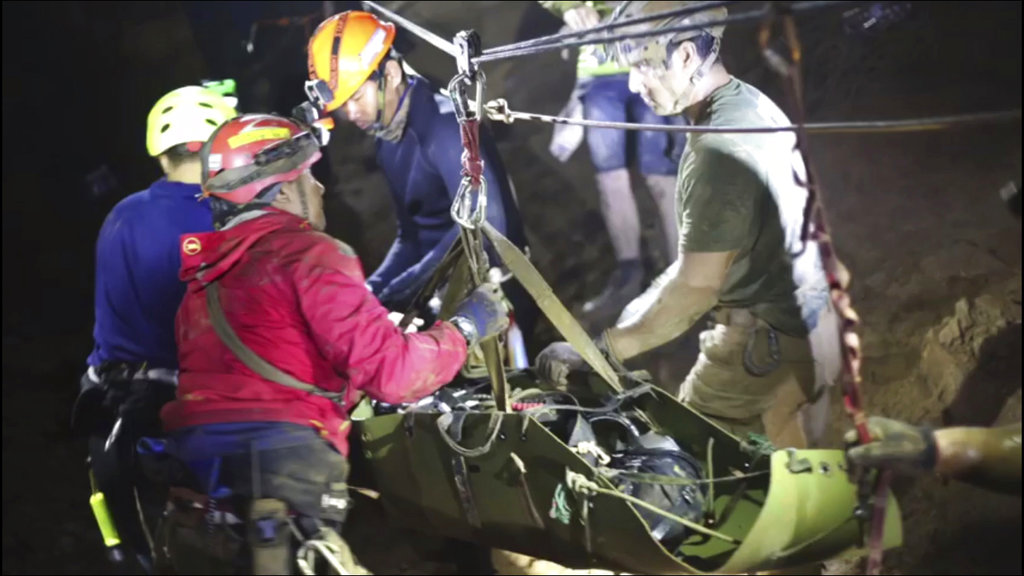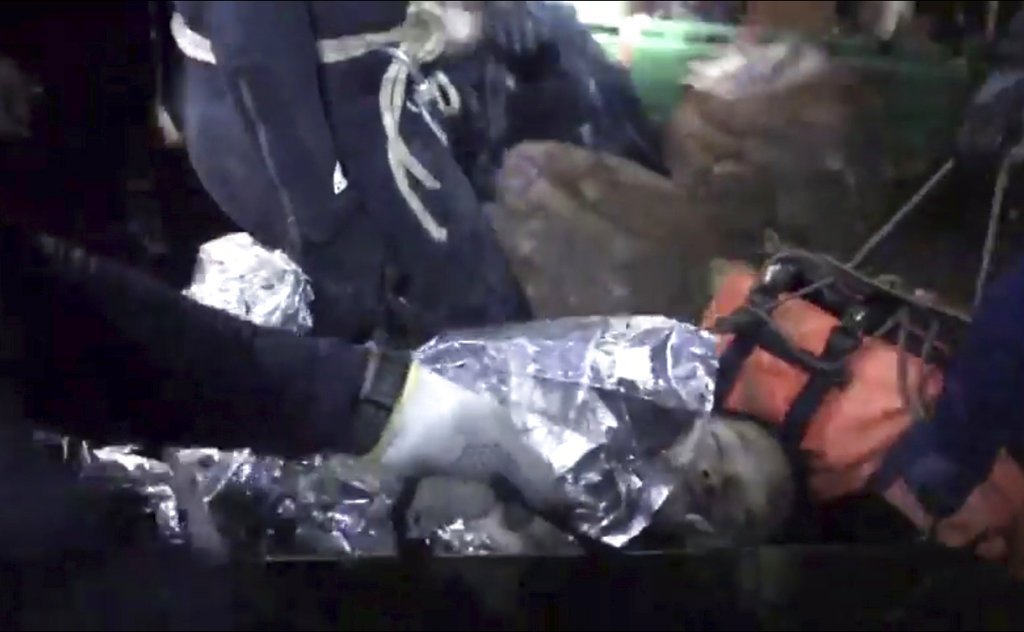Mae Sai, Thailand (AP) — The Thai boys saved from a flooded cave endured dives in zero visibility lasting up to half an hour. In places, they were put into harnesses and high-lined across rocky caverns, said a leader of the U.S. contingent involved in the operation, calling it a “once in a lifetime rescue.”

Derek Anderson, a 32-year-old rescue specialist with the U.S. Air Force based in Okinawa, Japan, said the dozen boys, ranging in age from 11 to 16, and their coach, who were trapped for more than two weeks before being rescued this week, were “incredibly resilient.”
“What was really important was the coach and the boys all came together and discussed staying strong, having the will to live, having the will to survive,” Anderson told The Associated Press in an interview on Wednesday.

The scale of the challenge confronting rescuers from Thailand, Britain, Australia and other countries only truly dawned on the U.S. team after it arrived at the cave in the early hours of June 28 as rain poured down on the region in northern Thailand. The Thai government had requested U.S. assistance.
“The cave was dry when we arrived, and within an hour and half it had already filled up by 2 to 3 feet and we were being pushed out,” said Anderson, the son of missionaries, who was born in Syracuse, New York, and grew up in Ecuador.
“That was just in the very beginning of the cave and at that point we realized this problem is going to be much more complex than we thought,” he said.
Thailand’s decision to dive the boys out despite their weak condition and lack of diving experience was made when a window of opportunity was provided by relatively mild weather. A massive operation to pump water out also meant air pockets were created at crucial points of the cave, making a rescue possible.
Falling oxygen levels, risk of sickness and the imminent prospect of more rain flooding the cave complex for months meant “the long-term survivability of the boys in the cave was becoming a less and less feasible option,” Anderson said.
Divers practiced their rescue techniques in a swimming pool with local children about the same height and weight as the members of the Wild Boars soccer team trapped in the cave.
The aim, Anderson said, was to make each of the boys “tightly packaged” so divers could keep control of them and adjust their air supply as needed. The process lasted hours for each boy, and involved them getting through long passageways barely bigger than an adult body.
Buoyancy compensators that establish neutral buoyancy underwater, hooded wetsuits, bungee cords and special face masks were carried by divers to the cramped patch of dry elevated ground where the boys were huddled.
The positive pressure masks were “really crucial,” Anderson said. Their use meant that even if a boy panicked — perhaps because of getting snagged in a narrow passage — and got water inside his mask, the pressure would expel it.

The complicated operation to bring the boys out of the cave began on Sunday, when four were extracted. Four more were brought out on Monday, and the operation ended Tuesday with the rescue of the last four boys and their 25-year-old coach.
The 18-day ordeal riveted much of the world — from the awful news that the 13 were missing, to the first flickering video of the huddle of anxious yet smiling boys when they were found by a pair of British divers nearly 10 days later.
The group had entered the sprawling Tham Luang cave to go exploring after soccer practice on June 23, but monsoon rains filled the tight passageways, blocking their escape, and pushing them deeper inside in search of a refuge.




